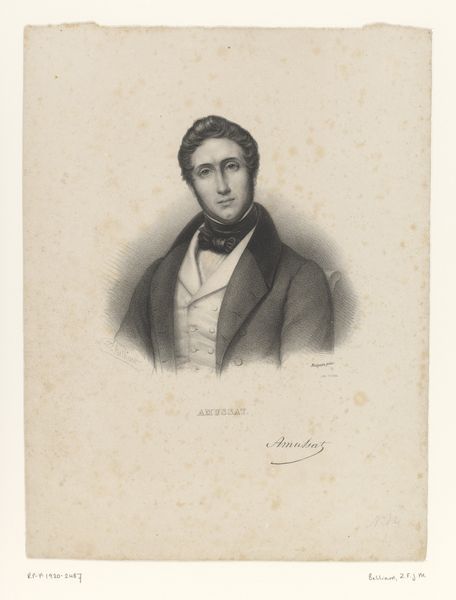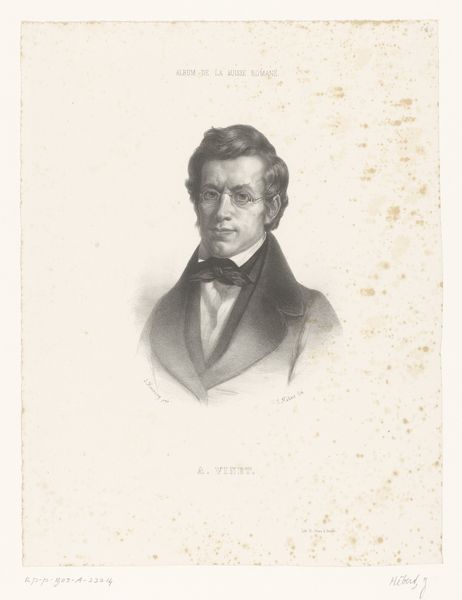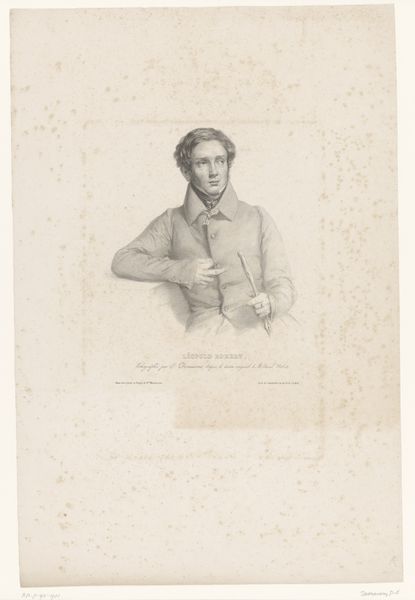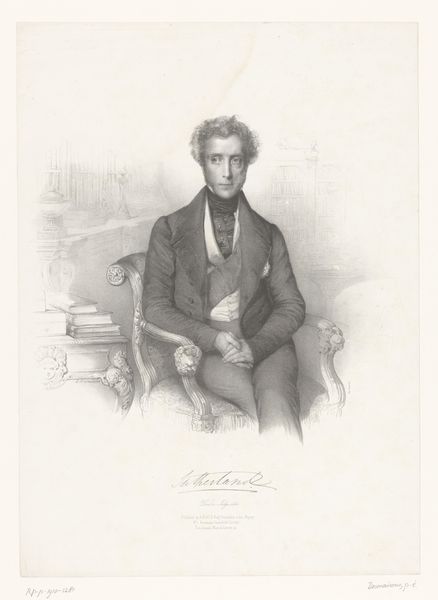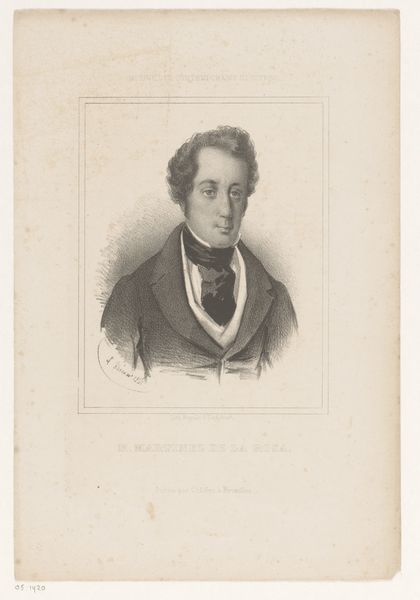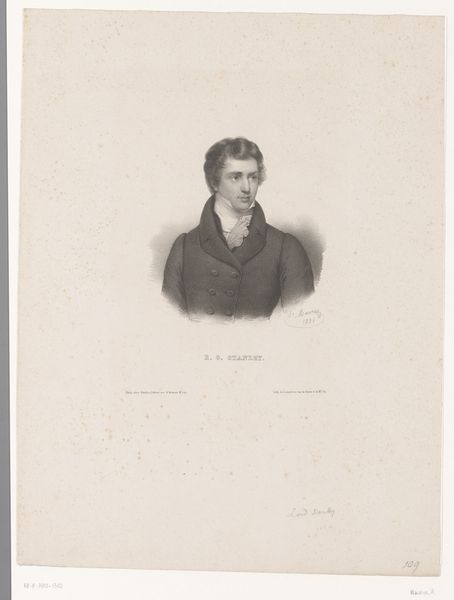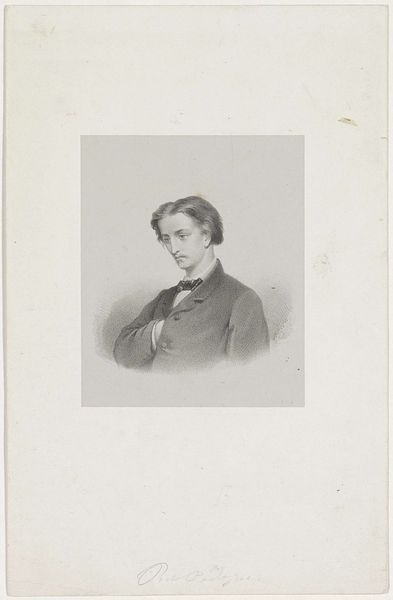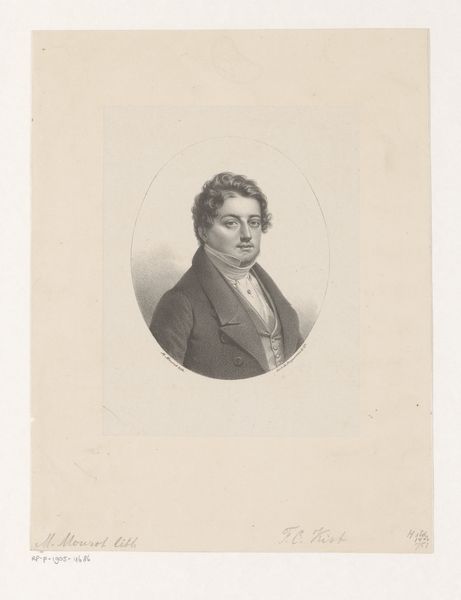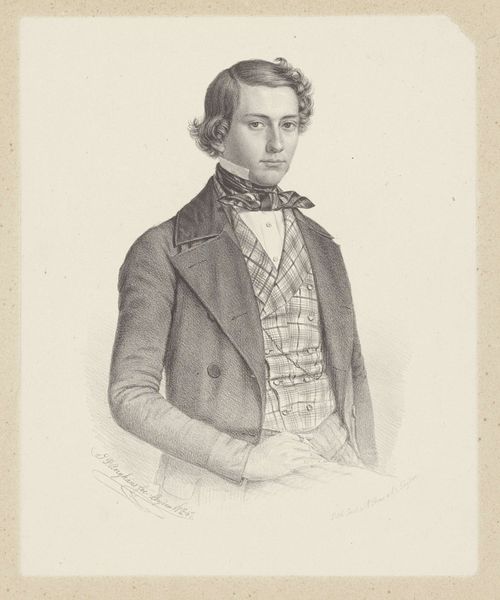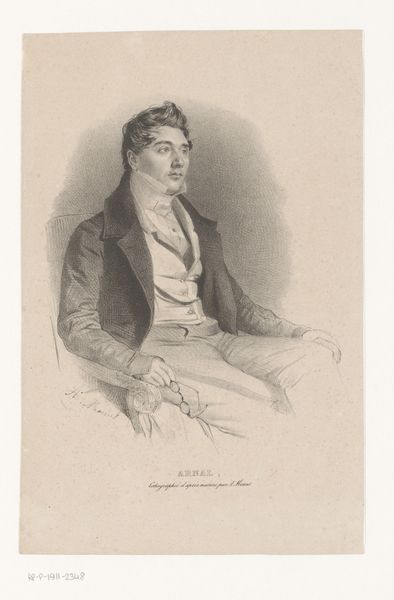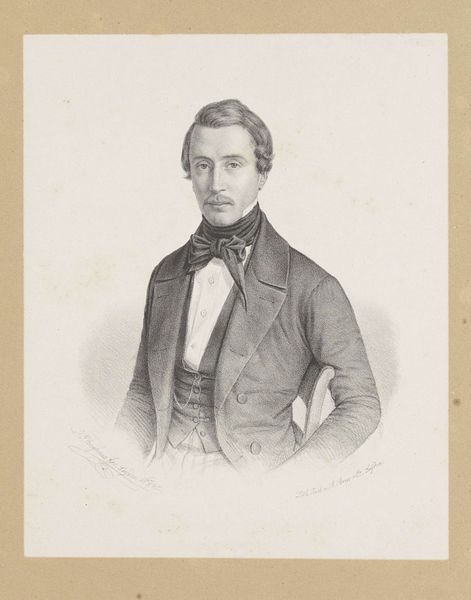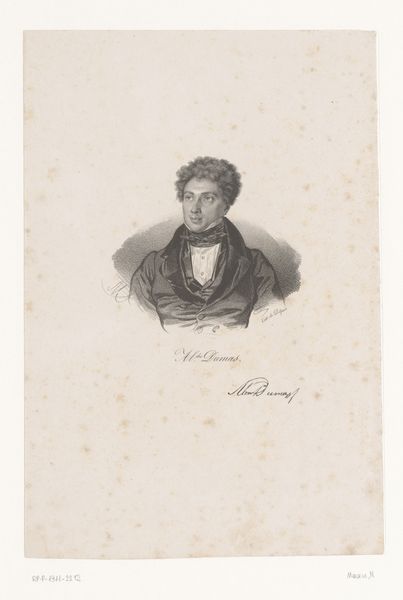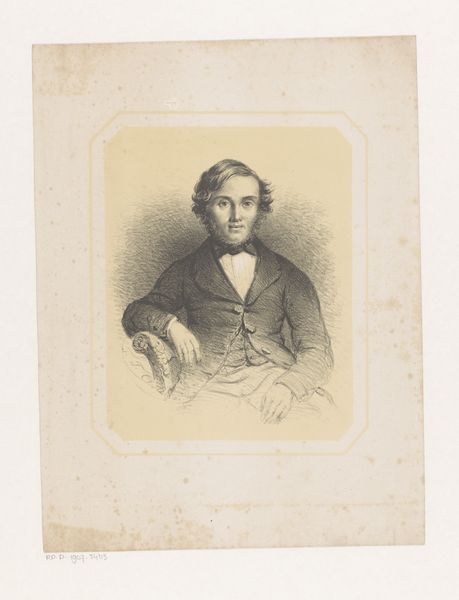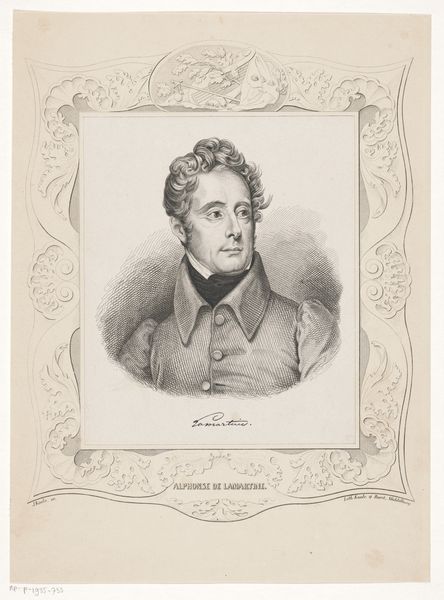
drawing, pencil
#
portrait
#
drawing
#
pencil drawing
#
romanticism
#
pencil
Dimensions: height 215 mm, width 180 mm
Copyright: Rijks Museum: Open Domain
Curator: Welcome. Here we have Hendrik Frederik Sartor's portrait of Franz Liszt, a pencil drawing that the Rijksmuseum dates roughly between 1833 and 1850. Editor: My immediate reaction is one of restrained intensity. The composition is almost entirely monochromatic, built with meticulous cross-hatching to model Liszt’s face. There's something captivating in its subtle dynamism, even within the traditional portrait format. Curator: Indeed. Considering its historical context, it portrays Liszt during the rise of Romanticism. His charisma on stage was revolutionary. Sartor’s rendering hints at Liszt's burgeoning celebrity and challenges societal expectations surrounding performance and artistry at the time. He embodies the artist as a figure of both creative genius and radical social influence. Editor: Absolutely. Sartor's medium itself plays a crucial role. Pencil allowed for incredibly precise detailing, and you see how it captures the play of light across Liszt’s features. His eyes seem to almost glisten! It directs our focus. Look closely at how sartor constructs the collar of his coat, all these layered hatchings build dimension. Curator: It's fascinating to consider Liszt's identity as a cultural icon being shaped, in part, through visual representation. This artwork provides insight into 19th-century perceptions of gender and artistry. The soft lighting on his face feminizes the character of the great composer. The artist isn't representing Franz Liszt so much as their projection of stardom, a powerful commentary on performance and identity. Editor: I concur. Sartor does something really striking. There's this delicate balance between sharp lines and soft shading which is only augmented by its monochromatic scheme, further simplifying it. This gives it depth and imbues it with the feeling of potentiality, as though it is not quite finished. Curator: The portrait captures a fleeting moment in time. This provides space to reflect on Liszt’s impact as well as reflect on artistic expression during a period of transformative change. Editor: An interesting look into 19th-century artistry, showing both refinement of medium, and great insight into capturing someone of burgeoning potential and fame.
Comments
No comments
Be the first to comment and join the conversation on the ultimate creative platform.
